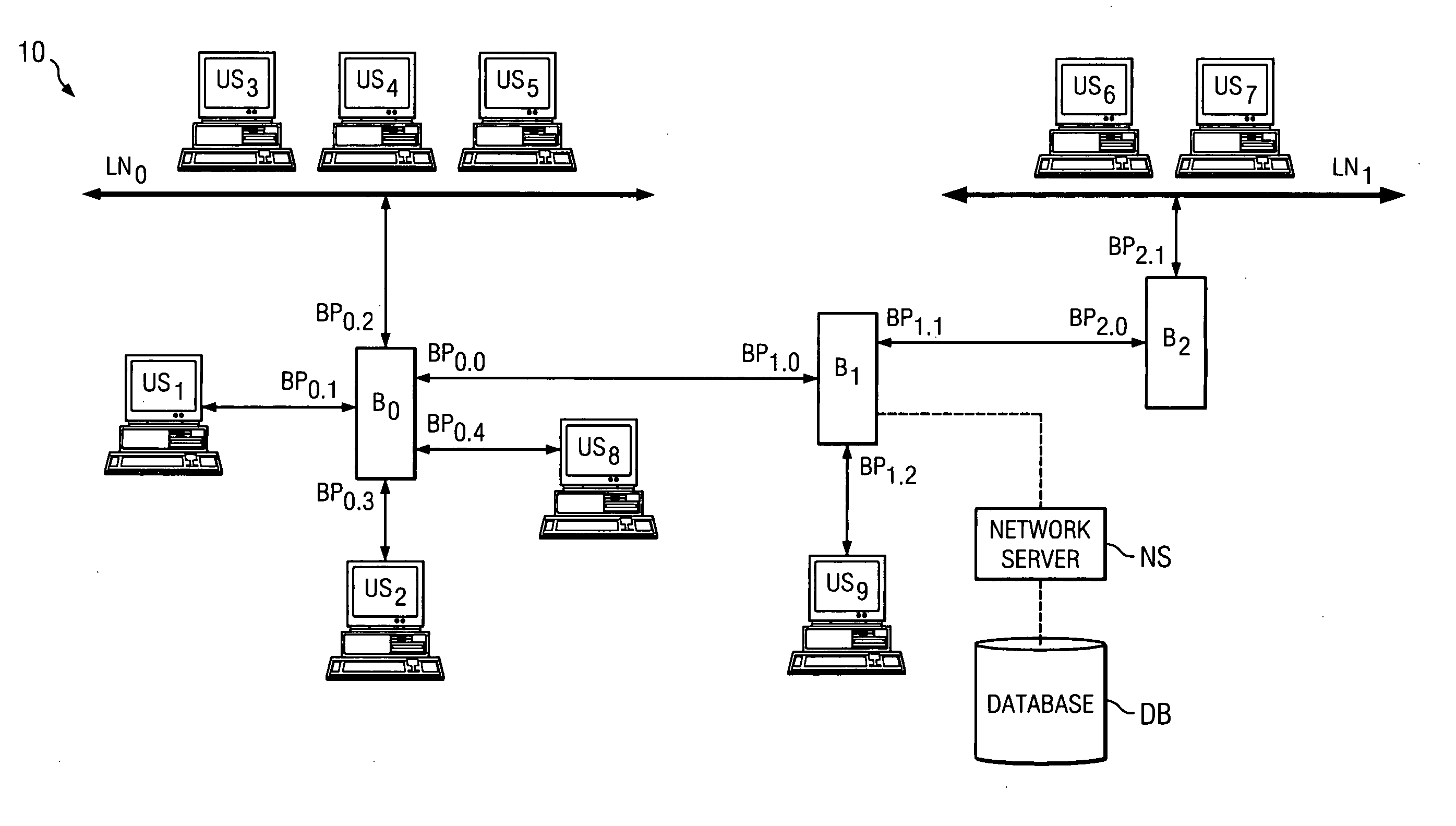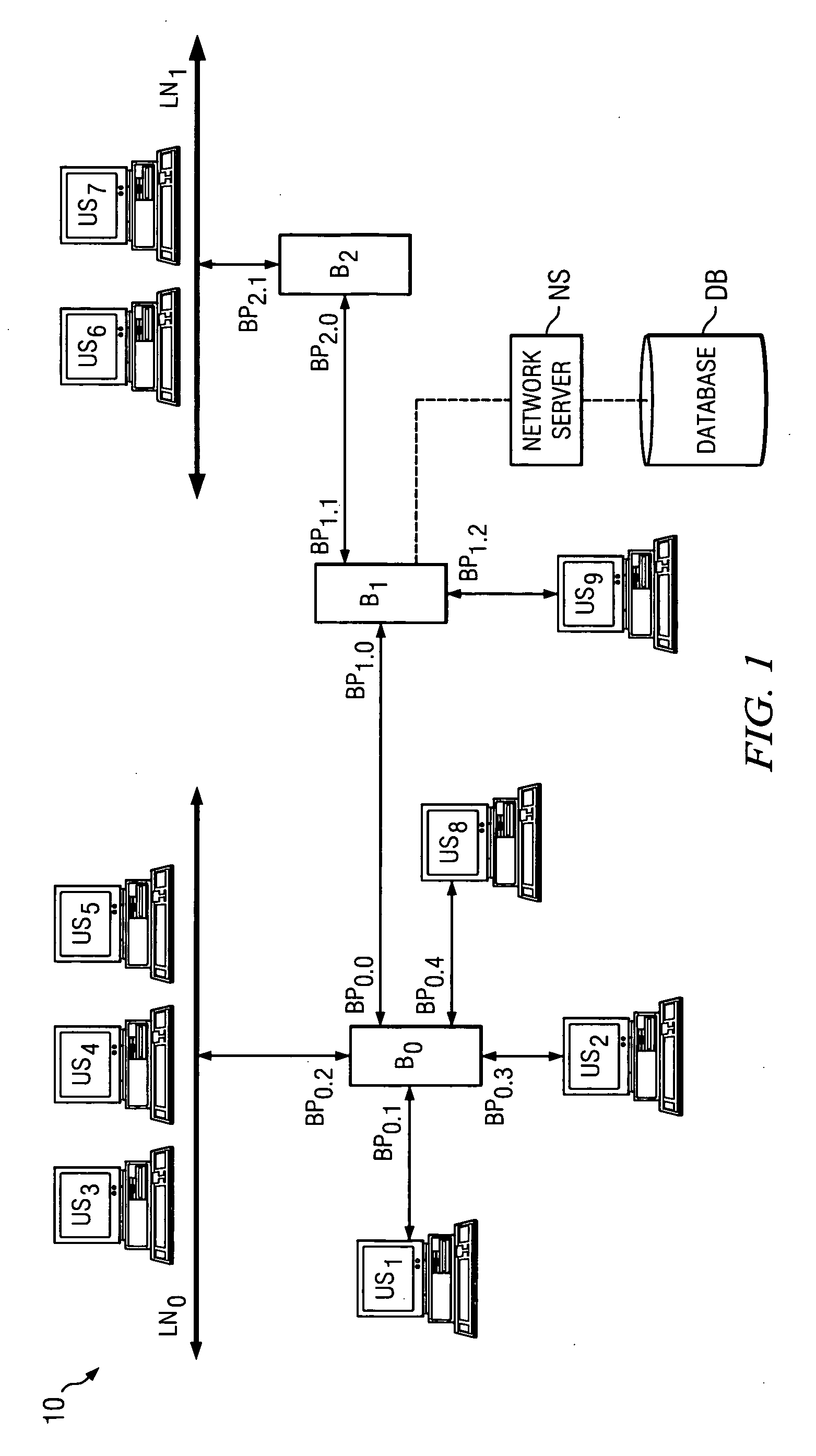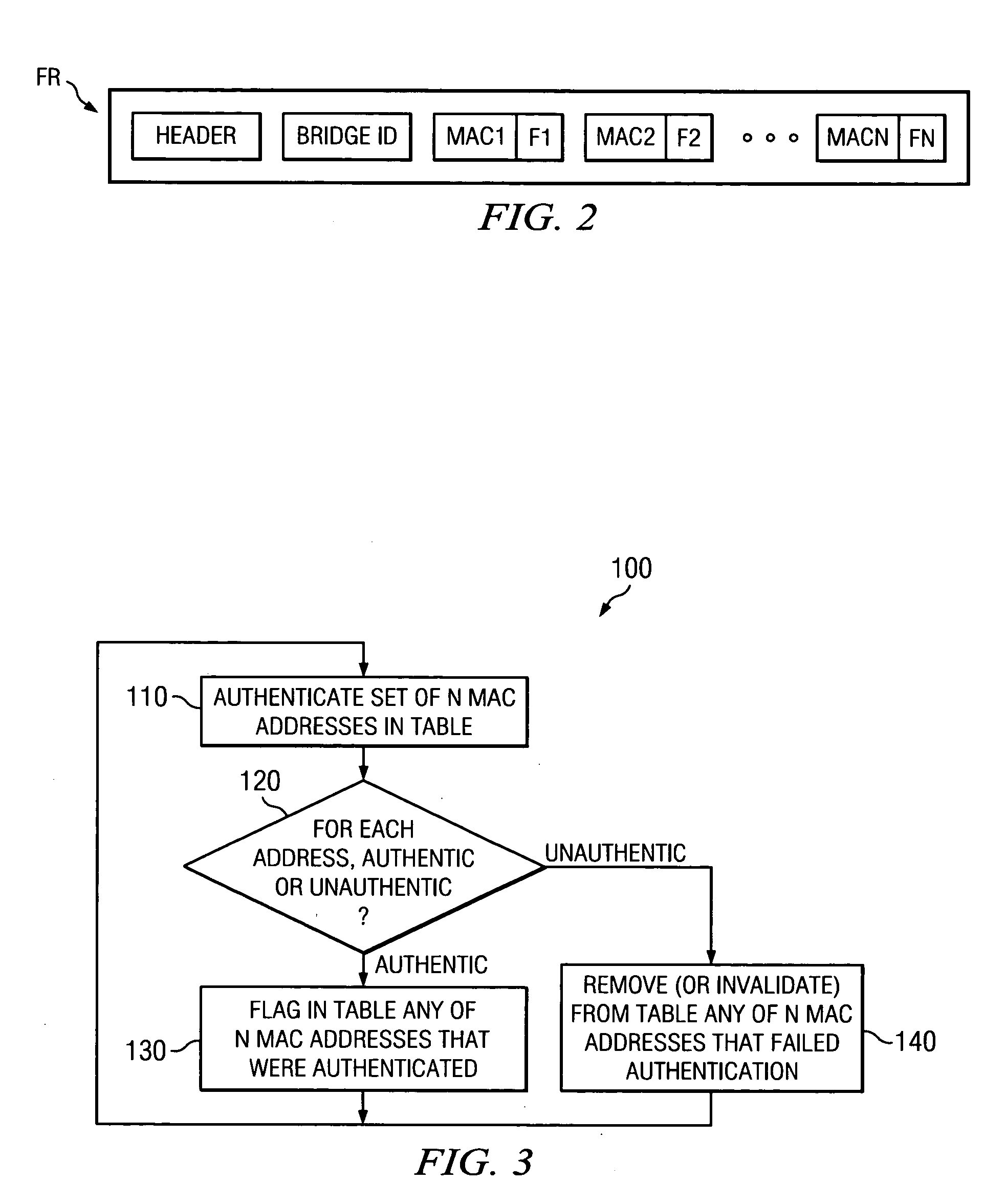Network with MAC table overflow protection
a network and table technology, applied in the field of computer networks, can solve problems such as inability to add different and unknown mac addresses, inability to protect network integrity, and inability to send thousands of different mac addresses to the same bridg
- Summary
- Abstract
- Description
- Claims
- Application Information
AI Technical Summary
Benefits of technology
Problems solved by technology
Method used
Image
Examples
Embodiment Construction
[0017]FIG. 1 illustrates a block diagram of a network system 10 into which the preferred embodiments may be implemented. In general at the level illustrated in FIG. 1, each item in system 10 is known in the art, where the nodes shown therein may be constructed using various forms of hardware and software programming to perform steps consistent with the discussions in this document. However, as detailed later, the methodology of operation as well as certain functions added to the bridge nodes provide for the preferred embodiments and improve system 10 as a whole, and such methodology and functionality may be readily added into the existing hardware and software programming of a system such as system 10. Indeed, as a result, the preferred embodiments are flexible and scalable to different sized networks.
[0018] System 10 generally represents a bridged network, such as an Ethernet network, that includes a number of nodes. In the context of Ethernet, some of the nodes may be referred to...
PUM
 Login to View More
Login to View More Abstract
Description
Claims
Application Information
 Login to View More
Login to View More - R&D
- Intellectual Property
- Life Sciences
- Materials
- Tech Scout
- Unparalleled Data Quality
- Higher Quality Content
- 60% Fewer Hallucinations
Browse by: Latest US Patents, China's latest patents, Technical Efficacy Thesaurus, Application Domain, Technology Topic, Popular Technical Reports.
© 2025 PatSnap. All rights reserved.Legal|Privacy policy|Modern Slavery Act Transparency Statement|Sitemap|About US| Contact US: help@patsnap.com



